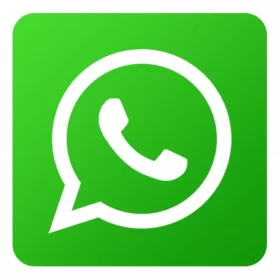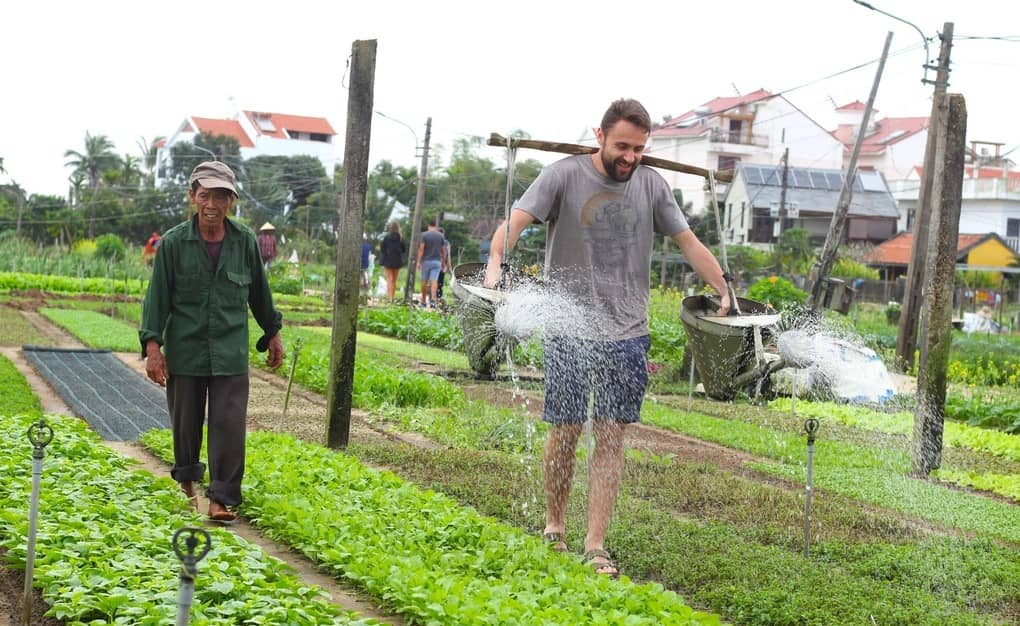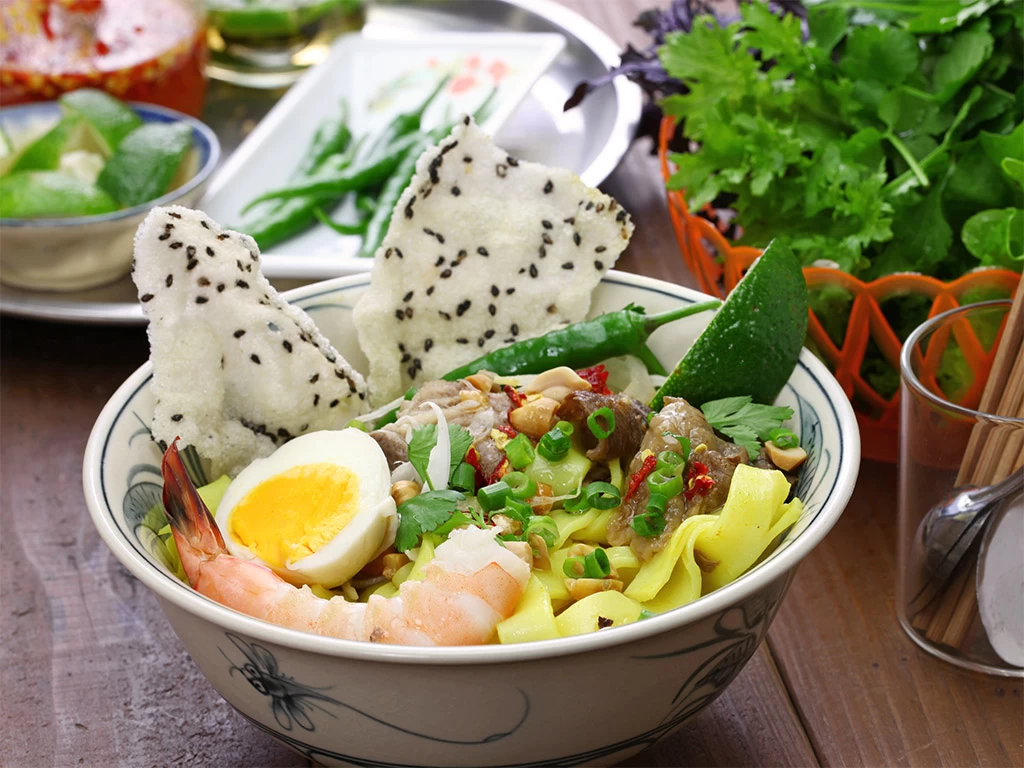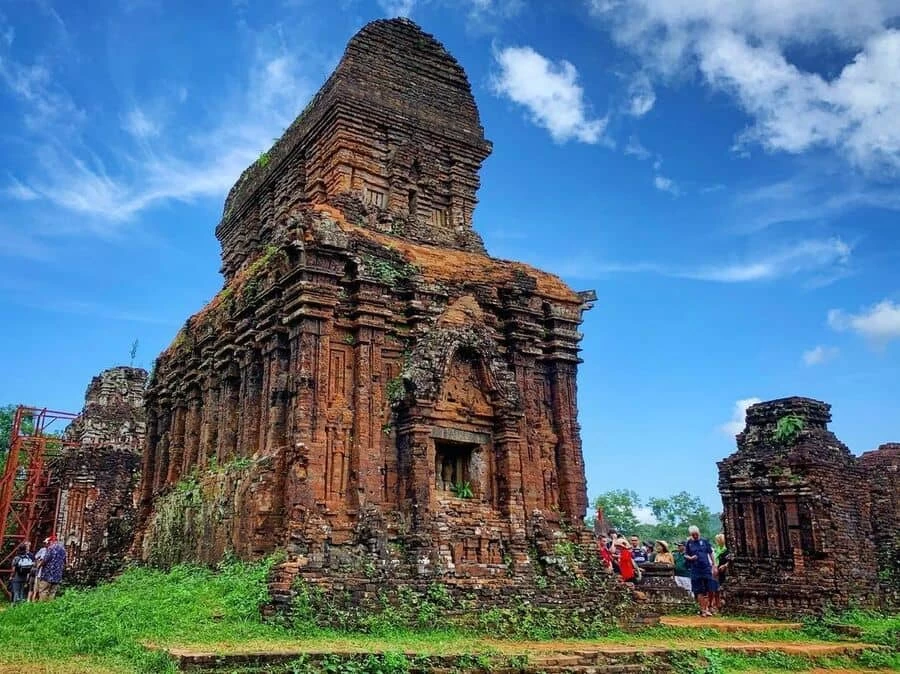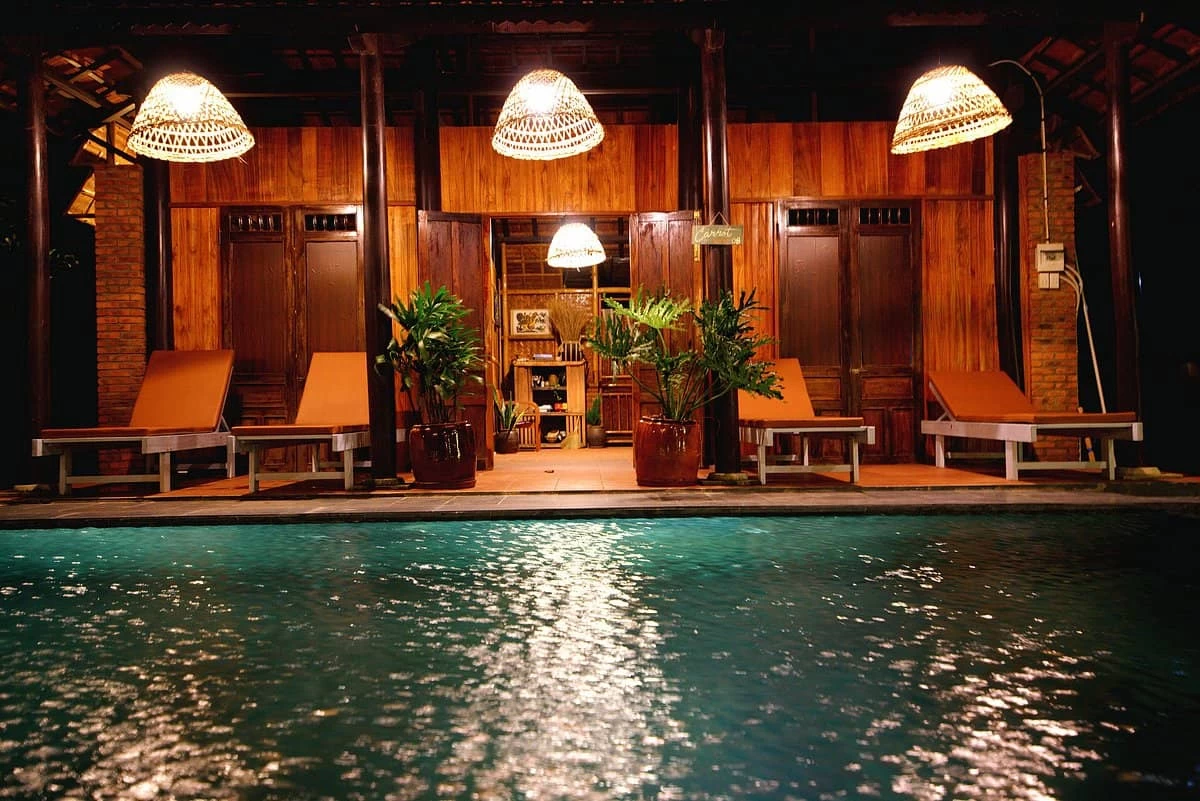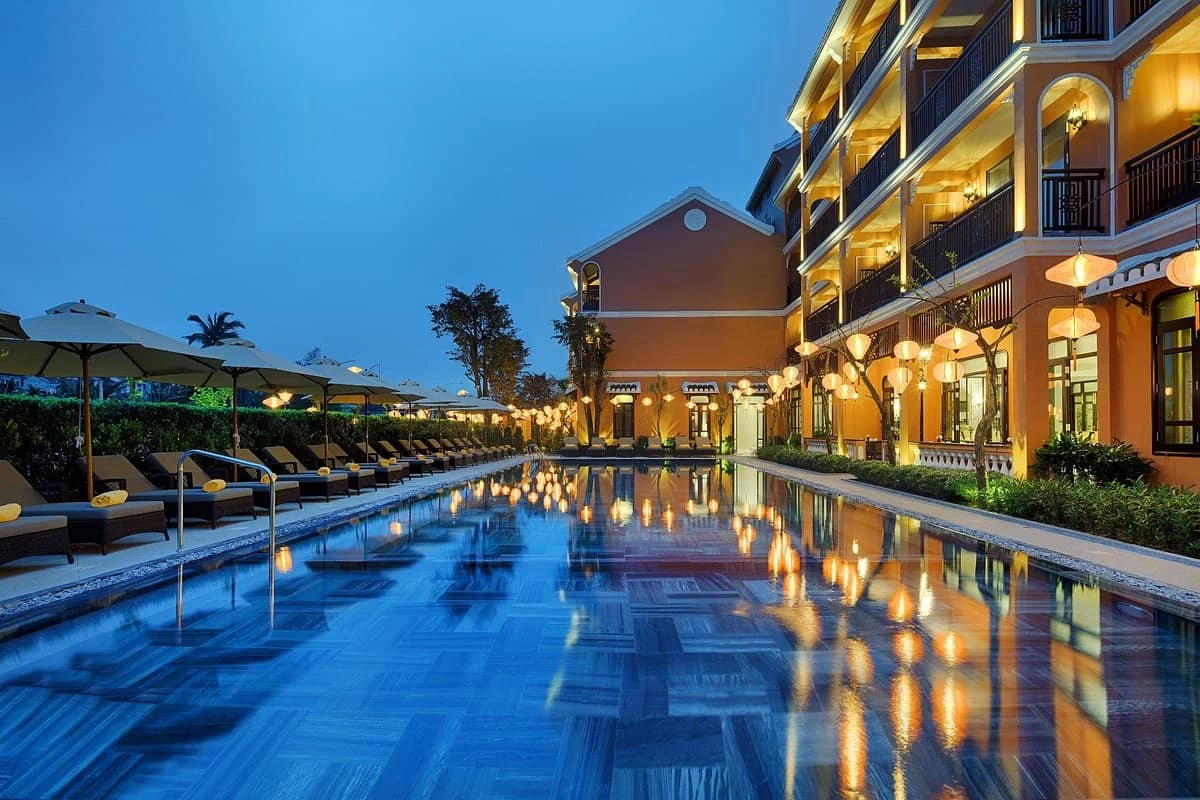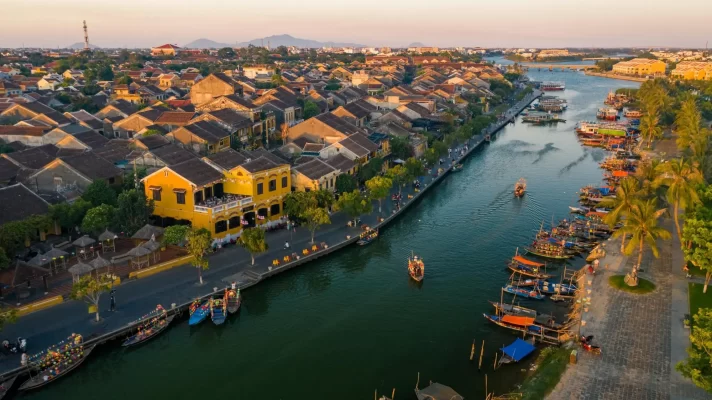
The beauty of Hoi An ancient town on the Hoai river
When is the best time to visit Hoi An? This is surely a common question for those who love and wish to set foot in the beautiful ancient town along the banks of the Hoai River in Vietnam. Ula Travel will provide you with detailed information about the climate, the best time to travel, and some tips before starting your exploration journey. Let’s find out more details right now.
I. Introduction to Hoi An
Hoi An, located in central Vietnam, is a captivating destination that blends historical charm with natural beauty. This ancient town, recognized as a UNESCO World Heritage Site in Vietnam since 1999, offers a unique travel experience that appeals to a wide range of tourists. Its well-preserved architecture, vibrant culture, and scenic landscapes make Hoi An a must-visit destination for anyone exploring Southeast Asia.
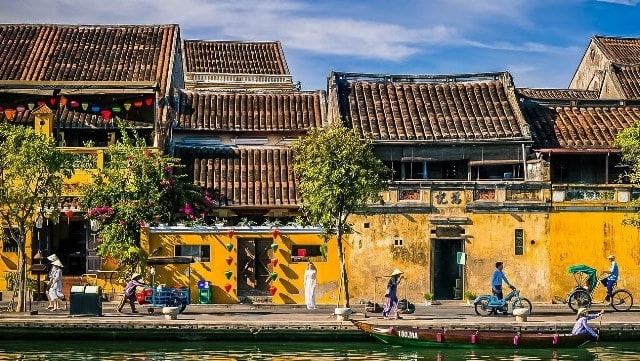
Hoi An Ancient Town – Asia’s most beautiful ancient city
Hoi An’s history dates back to the 15th century, when it served as a major trading port. The town’s architecture is a testament to its rich past, showcasing a mix of Vietnamese, Chinese, Japanese, and European influences. Wandering through its narrow streets, visitors can admire centuries-old temples, traditional wooden houses, and a charming riverside setting that has remained largely unchanged over the years.
The town is also famous for its lantern-lit evenings, bustling markets, and culinary delights. Hoi An’s unique blend of history, culture, and natural beauty offers a serene yet vibrant atmosphere that captivates every traveler.
II. Why Hoi An is an Attractive Destination for Tourists
1. Rich cultural heritage
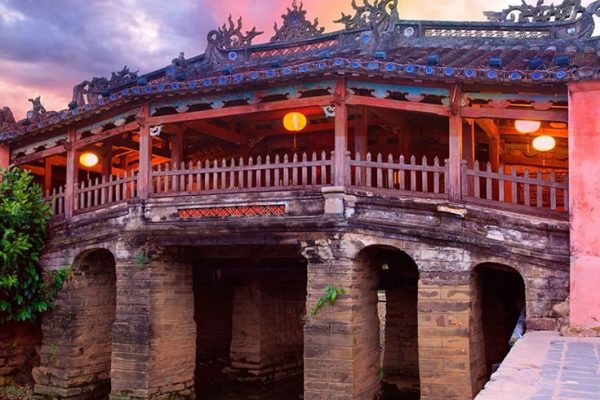
Japanese Covered Bridge
Hoi An’s historical significance and cultural richness are among the top reasons it attracts visitors from around the world. The town is a living museum with its preserved architecture and traditional customs. Tourists can explore ancient temples like the Quan Cong Temple, the Japanese Covered Bridge, and the Phung Hung Old House, each telling a story of Hoi An’s multicultural past.
Are you looking for: All Tours To Hoi An
2. Scenic Beauty
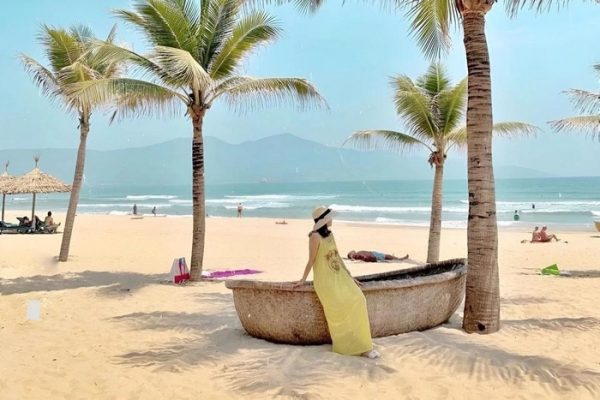
An Bang Beach
The picturesque landscapes of Hoi An are a draw for many travelers. The town is surrounded by beautiful beaches such as An Bang and Cua Dai, where visitors can relax and enjoy the coastal scenery. The nearby countryside, with its lush rice paddies and quaint villages, offers a peaceful escape and a chance to experience the rural life of Vietnam.
Start your journey with: Vietnam Horizon Hanoi to Hoi An
3. Culinary Delights
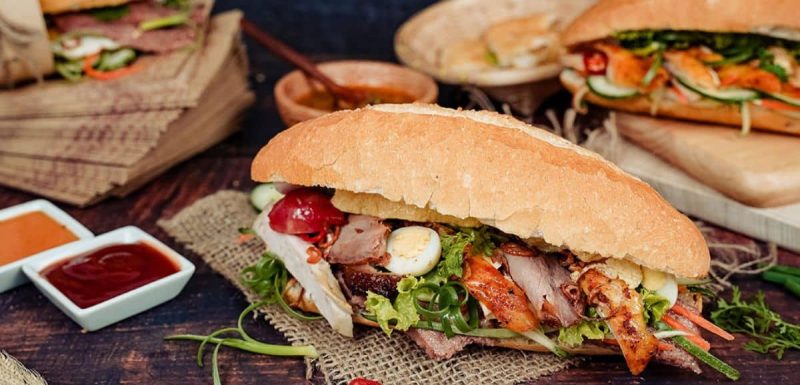
Banh Mi (Hoi An Bread)
Hoi An is a paradise for food lovers. The local cuisine is renowned for its fresh ingredients and unique flavors. Dishes like Cao Lau, Banh Mi, and the famous white rose dumplings are must-tries. The town also offers numerous cooking classes where tourists can learn to prepare Vietnamese dishes, adding a hands-on experience to their visit.
Learn more about: Hoi An Cuisine
4. Vibrant Markets and Shopping
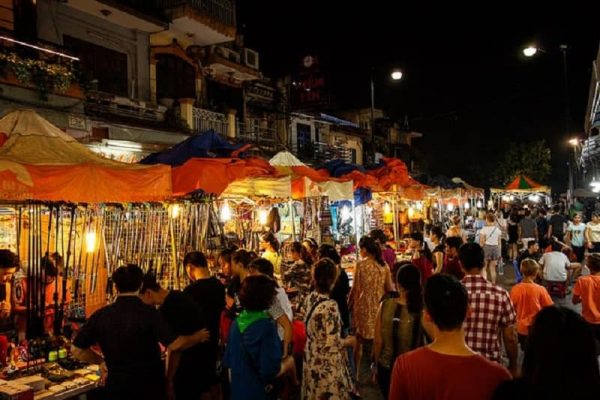
Night market in Hoi An
The bustling markets of Hoi An, such as the Central Market and the Hoi An Night Market, are perfect for those looking to immerse themselves in local life. Here, visitors can shop for souvenirs, local handicrafts, and tailor-made clothing. Hoi An is particularly famous for its tailors, who can create custom garments quickly and affordably.
You will be like: Colors of Central Vietnam
5. Festivals and Events
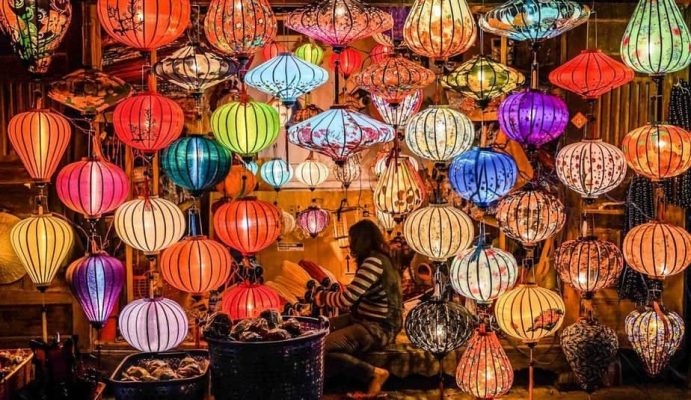
Hoi An Lantern Festival
Hoi An hosts several festivals throughout the year that showcase its cultural heritage and provide a unique experience for visitors. The monthly lantern festival is a highlight, where the old town is illuminated with thousands of colorful lanterns, creating a magical ambiance. During the Tet (Lunar New Year) celebrations, the town comes alive with traditional performances, parades, and festivities.
Do not miss: Fabulous Journey to Central Vietnam
6. Warm Hospitality
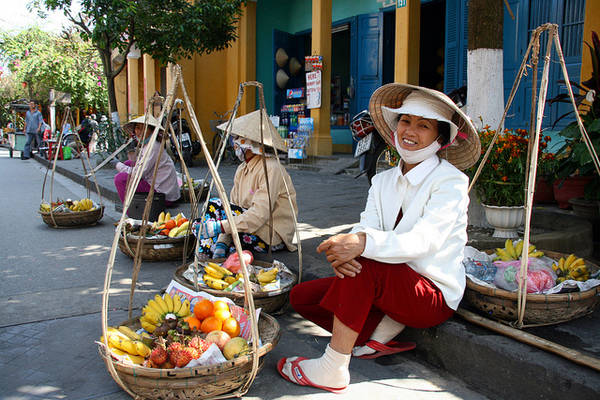
Hoi An people always attract tourists with their friendly smiles
The people of Hoi An are known for their friendliness and hospitality. Visitors often comment on the warm welcome they receive from locals, making their stay even more enjoyable. This genuine hospitality adds to the overall charm of Hoi An and leaves a lasting impression on travelers.
III. The Best Time to Visit Hoi An
1. Hoi An’s Climate
Hoi An, located in central Vietnam, experiences a tropical monsoon climate. This means the weather is characterized by high humidity and significant seasonal variation in rainfall. The town enjoys warm temperatures year-round, with average highs ranging from 25°C (77°F) to 35°C (95°F). However, the climate can be broadly divided into two distinct seasons: the dry season and the rainy season.
2. Dry Season (February to August)
During the dry season, temperatures are typically warm to hot, with average daily highs between 28°C (82°F) and 35°C (95°F). Humidity levels are moderate, and rainfall is scarce, making it the most comfortable period for outdoor activities.
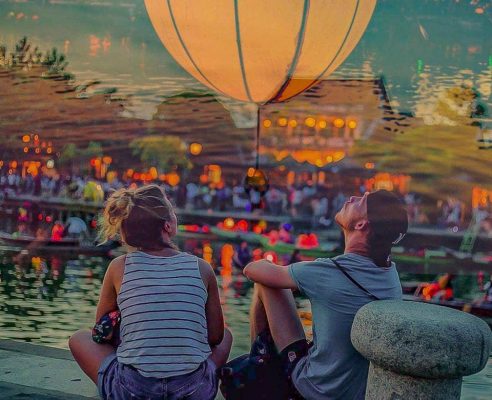
Best time to visit Hoi An is the dry season, you will have beautiful photos.
The dry season is peak tourist time in Hoi An. The pleasant weather allows for a wide range of activities, from walking tours and cycling to beach outings and exploring the countryside. The town is bustling with energy, and many cultural events and festivals take place during this time, enhancing the travel experience. However, the increased number of visitors can mean higher prices and crowded streets.
Ideal Activities
- Exploring Ancient Town: Wander through the UNESCO World Heritage Site of Hoi An Ancient Town, admiring its historic architecture, lantern-lit streets, and vibrant markets.
- Beach Excursions: Relax on the sandy shores of An Bang and Cua Dai beaches, where you can swim, sunbathe, or engage in water sports like paddleboarding and windsurfing.
- Cycling Tours: Rent a bicycle and explore the countryside, passing through rice paddies, quaint villages, and along scenic riverbanks.
- Boat Rides: Take a boat trip on the Thu Bon River, enjoying sunset views and visiting nearby islets.
Benefits of Traveling During the Dry Season
- Consistent Weather: The dry season offers predictable weather, making it easier to plan and enjoy outdoor excursions.
- Outdoor Events: Participate in various outdoor cultural events and festivals without the worry of rain disruptions.
- Photographic Opportunities: The sunny weather provides excellent lighting for photography, capturing the beauty of Hoi An’s landscapes and heritage sites.
Cultural Events and Festivals
- Hoi An Lantern Festival: Held on the 14th day of each lunar month, the Lantern Festival transforms the town with thousands of colorful lanterns, traditional music, and performances. Visitors can release lanterns on the river, making a wish for good luck.
- Tet (Lunar New Year): Celebrated in late January or early February, Tet is the most important festival in Vietnam, marked by parades, traditional ceremonies, special foods, and family gatherings.
- Full Moon Festival: Besides the Lantern Festival, the Full Moon Festival also features folk games, Bai Choi performances (a traditional game combining music, poetry, and acting), and offerings to ancestors.
Let’s EXPLORE CENTRAL VIETNAM
3. Rainy Season (September to January)
The rainy season brings cooler temperatures, with averages ranging from 20°C (68°F) to 28°C (82°F). This period is characterized by frequent and sometimes heavy rainfall, especially in October and November, which can lead to occasional flooding.
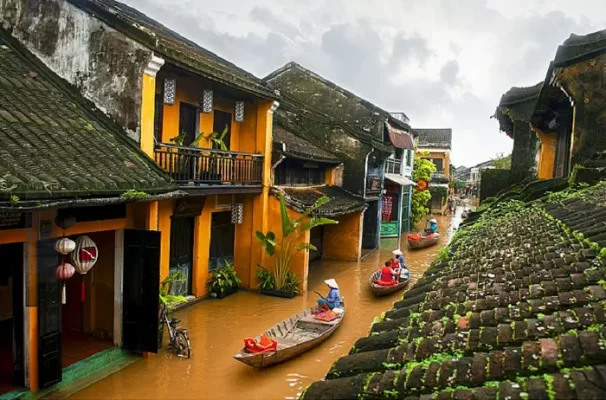
Hoi An turns into Italy’s Venice during the rainy season.
The rainy season offers a more relaxed and serene atmosphere. While heavy rains might limit some outdoor activities, it is a perfect time to experience Hoi An’s cultural and historical depth. Tourists can explore the town’s rich heritage through indoor activities like lantern-making workshops, visiting art galleries, and experiencing the local cuisine in cooking classes. The occasional flooding can also provide a unique and memorable perspective of the ancient town, reminiscent of its historical charm.
Experiences
- Romantic Ambiance: The rain adds a romantic and tranquil ambiance to Hoi An, with misty streets and lush green landscapes. It’s a perfect time for those who enjoy a quieter, more serene atmosphere.
- Photographic Beauty: Capture the unique beauty of Hoi An under the rain, with reflections in puddles and a softer light that creates atmospheric photos.
Benefits of Traveling During the Rainy Season
- Affordability: Travel costs, including accommodations and flights, tend to be lower during the rainy season, offering great deals for budget-conscious travelers.
- Fewer Crowds: Enjoy a more peaceful experience with fewer tourists, allowing for a more intimate exploration of the town and its attractions.
- Cultural Immersion: Engage more deeply with the local culture, as the slower pace of life during the rainy season provides opportunities for meaningful interactions with residents.
Indoor Activities and Cultural Experiences
- Cooking Classes: Join a Vietnamese cooking class to learn how to prepare traditional dishes like pho, banh xeo (Vietnamese pancakes), and fresh spring rolls.
- Art and Craft Workshops: Participate in workshops such as lantern making, pottery, and traditional painting, which are perfect for rainy days.
- Museum Visits: Explore Hoi An’s museums, such as the Hoi An Museum of History and Culture, the Museum of Folklore, and the Museum of Trade Ceramics, to learn about the town’s rich history and heritage.
- Spa and Wellness: Indulge in a relaxing spa treatment or a traditional Vietnamese massage at one of the many wellness centers in town.
No matter when you visit, Hoi An offers a rich cultural tapestry, scenic beauty, and a range of activities to suit every traveler. Plan your trip according to your preferences and enjoy the unique charm of this historic town.
Try it now: Flavors of Central Vietnam
IV. Key Events and Festivals
1. Tet (Lunar New Year)
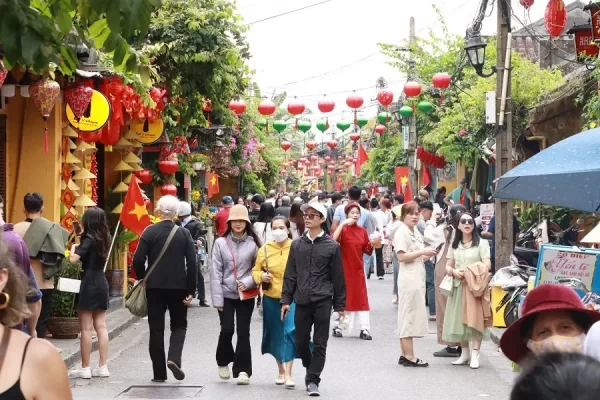
Tet atmosphere in Hoi An
Tet, or the Lunar New Year, is the most significant traditional festival in Vietnam, marking the arrival of spring based on the lunar calendar. Celebrated in late January or early February, this festival offers a unique cultural experience.
- Traditional Customs and Culture: During Tet, families gather to honor their ancestors, clean and decorate their homes, and prepare special foods like bánh chưng (square sticky rice cake). Streets and homes are adorned with peach blossoms, kumquat trees, and vibrant red decorations, symbolizing good luck and prosperity. Visitors can witness and partake in traditional customs such as giving and receiving “lì xì” (red envelopes with money) and participating in lively dragon and lion dances.
- Cultural Performances and Activities: Throughout the festival, Hoi An hosts various cultural performances, including traditional music, dance, and theatrical shows. Temples and pagodas are bustling with locals and tourists alike, offering a great opportunity to learn about Vietnamese spiritual practices and traditions.
2. Hoi An Lantern Festival
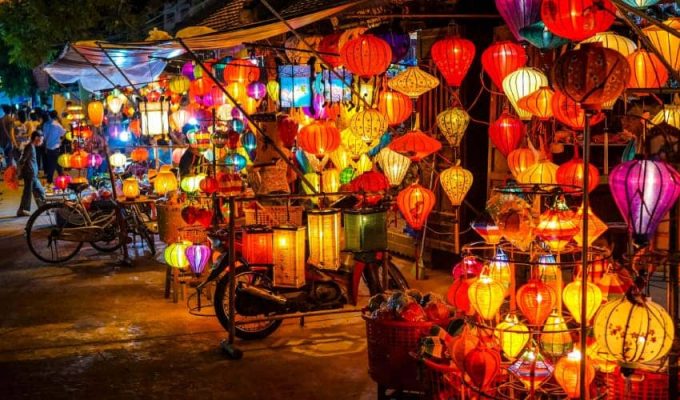
The vibrant colors of the Hoi An lantern festival
The Hoi An Lantern Festival is a monthly event that transforms the ancient town into a mesmerizing display of lights and colors. Held on the 14th day of each lunar month, the festival coincides with the full moon, considered an auspicious time in Vietnamese culture.
- Timing and Activities: During the festival, the town’s electric lights are turned off, and the streets are illuminated with thousands of colorful lanterns. Visitors can participate in lantern-making workshops, release floating lanterns on the Hoai River for good luck, and enjoy traditional folk music and dance performances. Local vendors sell a variety of delicious street foods, providing an authentic taste of Hoi An’s culinary heritage.
- Attraction for International Tourists: The Hoi An Lantern Festival is a major draw for international tourists, offering a visually stunning and culturally rich experience. The enchanting atmosphere created by the lanterns, combined with the historic architecture of Hoi An, provides countless photo opportunities and memorable moments.
3. Mid-Autumn Festival
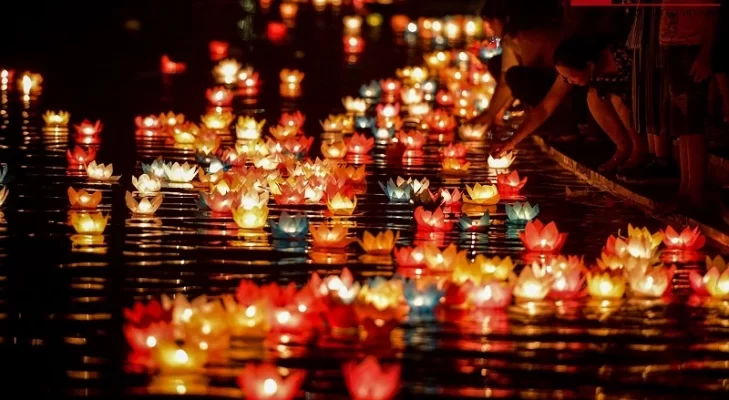
People release flower lanterns to pray for good luck during the Mid-Autumn Festival
The Mid-Autumn Festival, also known as the Moon Festival, is celebrated on the 15th day of the 8th lunar month, typically in September or October. This festival is dedicated to children and family reunions and is marked by various fun and engaging activities.
- Festive Activities and Participation: During the Mid-Autumn Festival, children parade through the streets with beautifully crafted lanterns in various shapes and sizes. Lion dances, drum performances, and traditional games add to the festive atmosphere. Families gather to enjoy mooncakes, a special pastry filled with ingredients like lotus seed paste, red beans, or salted egg yolk.
- Cultural Insights: The festival is also a time to appreciate the full moon, symbolizing unity and harmony. Visitors can join local families in their celebrations, taste mooncakes, and learn about the significance of the festival’s customs and legends, such as the story of Chang’e, the Moon Goddess.
By timing your visit to coincide with these key events and festivals, you can experience the vibrant culture and traditions of Hoi An, making your trip truly unforgettable.
V. Local Travel Tips for Your Itinerary
1. Packing Essentials
- Clothing: Light, breathable clothing is ideal for the hot and humid dry season (February to August). For the rainy season (September to January), pack waterproof clothing and a light jacket, as temperatures can drop and sudden downpours are common.
- Footwear: Comfortable walking shoes are a must for exploring Hoi An’s ancient streets and sites. Waterproof footwear is advisable during the rainy season.
- Sun Protection: Bring sunscreen, a wide-brimmed hat, and sunglasses to protect against the strong tropical sun.
2. Transportation
- Bicycles and Motorbikes: Hoi An is relatively small and flat, making bicycles a popular and eco-friendly option for getting around. Motorbikes can be rented for longer distances or for exploring the countryside.
- Taxis and Ride-Hailing Apps: Taxis are available, but make sure they use the meter. Ride-hailing apps like Grab are also a convenient and often cheaper option.
- Walking: The old town area is best explored on foot. Many streets are pedestrian-only zones, especially in the evening when the lanterns are lit.
3. Accommodation Tips
- Variety of Options: Hoi An offers a range of accommodations, from luxury hotels and resorts to budget-friendly hostels and homestays. Booking in advance, especially during peak season (March to May), is recommended.
- Local Homestays: Staying in a local homestay can provide a more authentic experience and a chance to interact with Vietnamese families.
4. Food and Drink
- Local Cuisine: Don’t miss local specialties such as Cao Lau (a noodle dish), White Rose dumplings, and Banh Mi sandwiches. Street food is generally safe, but always choose busy stalls with high turnover.
- Bottled Water: Avoid tap water and ice in drinks. Stick to bottled water and drinks in sealed containers.
- Cooking Classes: Consider taking a cooking class to learn how to make traditional Vietnamese dishes and bring a taste of Hoi An home with you.
In conclusion, determining the best time to visit Hoi An depends largely on your preferences and priorities as a traveler. With its unique blend of historical charm, cultural richness, and natural beauty, Hoi An offers something special year-round. Regardless of the season you choose to visit, Hoi An welcomes you with open arms and promises an unforgettable journey filled with discovery, adventure, and cultural immersion. So pack your bags, set your sights on this charming Vietnamese town, and get ready for an experience that will stay with you long after you’ve returned home.
See more: Vietnam Travel Tips

